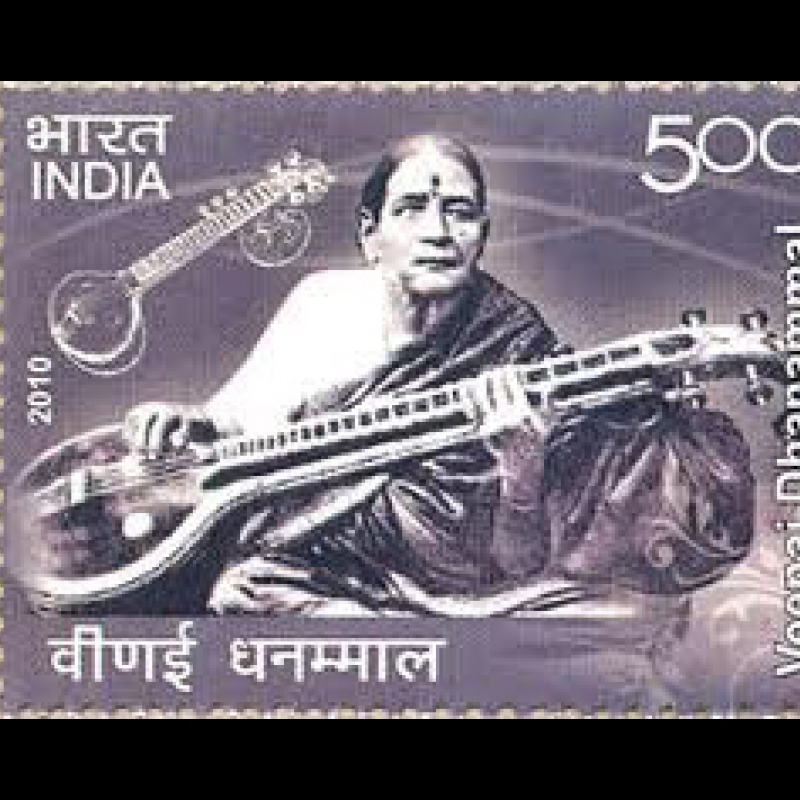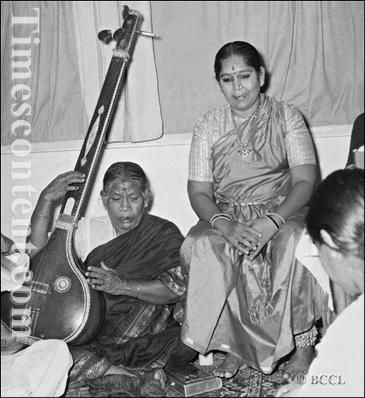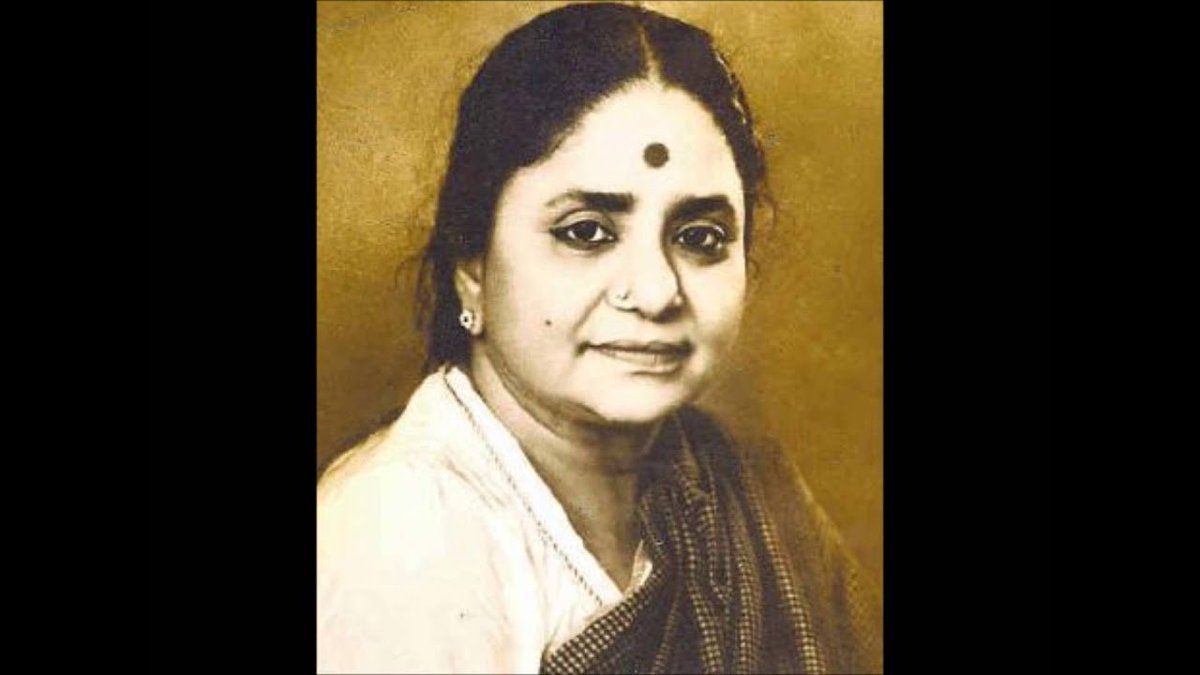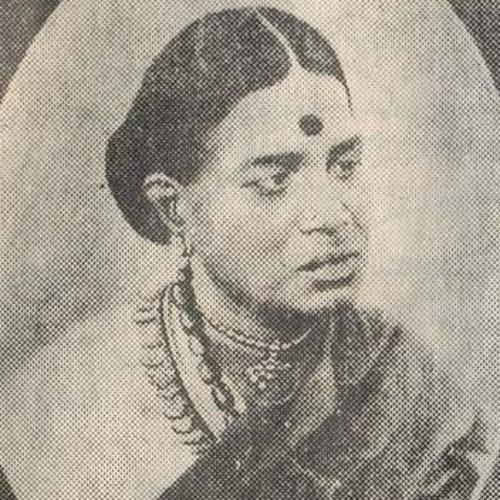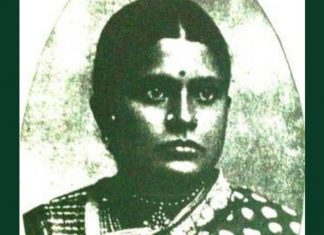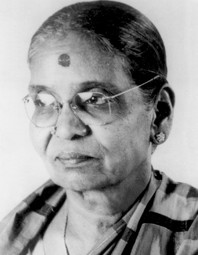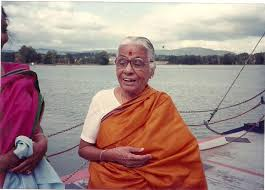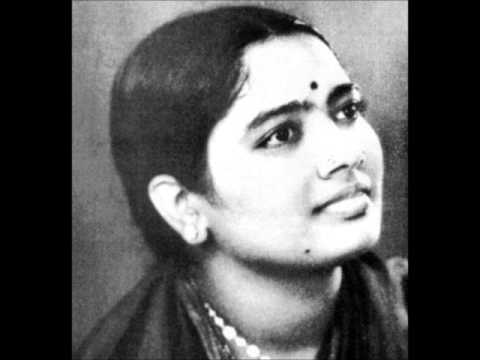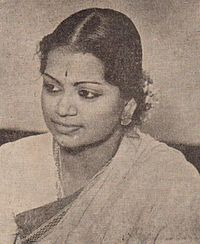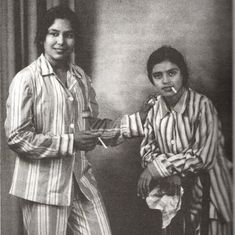[Thread on Great Women Carnatic Musicians] Our friends at @kansenclub , who do a great job of propagating Hinudustani music, did a thread on Great Women Musicians on the occasion of Dasara. They contacted us and checked if we can do a thread on Great Carnatic Women Musicians
We are more than happy to do such a thread. This thread will mainly be about the pioneering Women Musicians. We will talking about musicians who are no longer with us.
Before we go around listing the musicians, let us give you a background on how the Carnatic music scene was during the turn of the 19th century
During the late 19th century and early 20th century only women from the Devadasi community were performing Carnatic music. Other communities did not allow their women to perform in concerts.
The contribution of Devadasi community to Carnatic music is immense. B.M. Sundaram has written some informative books on this aspect. There books are in Tamil.
From that time to the current time, women have made tremendous progress in Carnatic music. Lot of it can be traced back to some of the pioneering women musicians. This is our humble tribute to these great ladies. Let us start now.
1. VEENA DHANAMMAL : For many of the great artists and connoisseur of the early 20th century, Dhanammal represent all that is great in Carnatic music. Many held her to be the reincarnation of Saraswati. She had large number of hard core fans for her music
Dhanammal belonged to the Devadasi tradition. She had many Gurus. A person called Baldas Naidu is supposed to have taught her padams. Tiruvotriyur Tyagayyar used to meet her often and taught her some pieces. She also learnt under Sathanur Panchanada Iyer
Sathanur Panchanada Iyer was a direct disciple of Suddhamathalam Thambiyappan, who in turn was a direct disciple of the great Muthuswamy Dikshitar. Hence, Dhannamal had a huge set of authentic Dikshitar Krithis in her repertoire.
Dhanammal& #39;s repertoire was huge. Dikshitar krithis, Shyama Sastry krithis, Tyagaraja krithis, Kshetrayya Padams and Padams by other composers, a huge number of Javalis and krithis of other composers as well
She gave concerts in her house, in George Town on Sundays. The room in which she played was very small and yet the top most rasikas of Madras were present to hear her Friday concerts. In attendance would be musicians like Musiri and Tiger Varadachari
The Sitar maestro, speaking to Gowri Ramanarayan said, "I had tears in my when I heard Dhanammal play the first phrase of Shankarabaranam". Tirukkodikaval KrishnaIyer, a renowned violin vidwan remarked, "For Dhanammal& #39;s Shankarabaranam I will give up all worlds)
Such was the impact that Dhanammal made on her listeners. Dhanammal& #39;s amazing style is often referred to as Dhanammal Bani and the third generation of musicians after her are still keeping it alive
Here is Dhanammal. This is her most famous picture. As you can see, the Indian Govt issued a stamp in her honor.
Here you can hear Dhanammal playing the veena and also singing along. This was recorded during the fag end of her life. https://www.youtube.com/watch?v=78VUlRGB5aw">https://www.youtube.com/watch...
2. BANGALORE NAGARATNAMMA : Another great woman who was responsible for many a breakthrough. She is the one who built the Tyagaraja Samadhi and she ensured that women can sing during the Tyagaraja Aradhana. Till then it was a male only affair
Bangalore Nagaratnamma also belonged to the Devadasi tradition. She was a popular singer in those times and was responsible for publishing a Telugu work, & #39;Radhika Santawanam& #39; by a writer called MudduPalani. The great men of Telugu letters objected to this being published
They thought it was too erotic. Bangalore Nagaratanamma fought the prejudices of the day and published the book. She was the one who build the Tyagaraja Swami samadhi using her own money. She shifted her base from Madras to Tiruvaiyyaru. Such was her devotion to Tyagaraja.
V. Sriram @MadrasMobile has written an excellent book on Bangalore Nagaratnamma titled, & #39;Devadasi and the Saint& #39;. You will get an excellent idea of how path breaking this great lady was. We recommend this book highly (Disclaimer: This is not a paid tweet. We love this book)
Here is Bangalore Nagaratnamma singing a slokham. This is probably from an old 78rpm record. You can hear the scratching sound. Still, this is an excellent record of our musical history https://soundcloud.com/archive-of-indian-music/cbnvf001-bangalore">https://soundcloud.com/archive-o...
3. T. JAYAMMAL : Jayammal was the daughter of Veena Dhanammal. She was an excellent singer. It so happens that her daughter, T Balaswarawathi became one of the great Baratanatyam performers. She became more well known than Jayammal.
There is one funny story told about Jayammal. Once she was asked to come to the studio to record for a 78 rpm. These 78rpms had a time limit of somewhere around 3 mins. A few seconds before time a red light would glow in the studio. The artist must quickly finish their piece.
The light would switch off after it was 3 mins. A studio executive explained this to Jayammal. An irritated Jayammal said, "I can& #39;t sing to the dictates of the light bulb. You switch off the bulb once I finish singing". We are not sure how true this is though.
Jayammal& #39;s daughter Balasaraswathi was a famous dancer, as we had remarked. Her son. T.Vishwanathan, fondly called as Vishwa, was a renowned flautist. He was a Sangeetha Kalanidhi awardee. You can see Jayammal in this photo with Balasaraswathi. She is the one who is sitting down
Here is Jayammal singing the famous Atana padam, & #39;Tiruvotriyur Tyagarajan& #39; https://soundcloud.com/archive-of-indian-music/t-jayammal-thiruvotriyur">https://soundcloud.com/archive-o... Those who have heard Brinda and Mukta will note the similarity in style. What an amazing Atana
3. MADRAS LALITHANGI: It is sad that this pioneering lady is almost forgotten nowadays. Her daughter though his still a well loved musician. Her daugher& #39;s name was Vasanthakumari. Popularly known as MLV. The ML standing for Madras Lalithangi
Madras Lalithangi too belonged to the Devadasi tradition. She did pioneering work on Purandara Dasa& #39;s composition. She passed them on to her daughter MLV. The Carnatic music owes her a big debt for her for propagating Purandara Dasa krithis.
This link gives more details about Madras Lalithangi. Has excerpts from a piece written by V.Sriram ( @MadrasMobile ) https://www.rasikas.org/forums/viewtopic.php?t=31468">https://www.rasikas.org/forums/vi...
Here is a photo of Madras Lalithangi. She also learnt from Dhanammal. It is said that Dhanammal taught her & #39;Sri Balagopala& #39;, the Dikshitar krithi in Bhairavi. MLV used to sing it.
Here is Madras Lalithangi singing & #39;Gajavadan Beduve& #39; in Dhanyasi. Nowadays people sing this Purandara Dasa krithi in Hamsadhwani https://www.youtube.com/watch?v=QwkH76hQSEE">https://www.youtube.com/watch... It sounds so beautiful in Dhanyasi.
My mistake, Madras Lalithangi should have been numbered 4 and not 3.
5. DHANAKOTI SISTERS: Dhanakoti Ammal and Kamakshi were the sisters, who were popularly called Dhanakoti sisters. Dhanakoti Ammal was a close friend of Veena Dhanammal
Dhanakoti Ammal had a huge repertoire of krithis. She belonged to the lineage of Shyama Sastry. She also knew lot of Tamil krithis. She was the aunt of Kanchipuram Naina Pillai, who was a famous musician in the initial part of 20th century.
Dhanakoti Ammal popularized many Shyama Sastry compositions. Here is a photograph of Dhanakoti Ammal
Here are the Dhanakoti sisters singing the Shyama Sastry krithi, & #39;sarojadala netri& #39; in Shankarabaranam https://soundcloud.com/archive-of-indian-music/sets/dhanakoti-ammal">https://soundcloud.com/archive-o...
6. COIMBATORE THAYI: She also belonged to the Devadasi tradition. Personally, we don& #39;t have much information about her other than that she learnt from Dhanammal and that in the early 1900s she was a popular recording artist who gave many 78 rpm records.
She was said to be such a popular recording artist that the Gramaphone Company allocated two weeks just for & #39;Coimbatore Thayi recording sessions& #39;. She died quite younger (in her 40s)
Here is Coimbatore Thayi and recording of her of a Thevaram, & #39;masil veenaiyum& #39; https://soundcloud.com/archive-of-indian-music/sets/coimbatore-thayi">https://soundcloud.com/archive-o... Sung in Poorvi Kalyani. We have heard Mayamalavagowla versions.
7. T. BRINDA : We will now come to the next generation women musicians. T. Brinda was the grand daughter of Veena Dhanammal and she along with her sister Mukta and cousins Balasaraswathi and Vishwa kept the Dhanammal bani alive in the 20th century
At a very young age T.Brinda was sent to Kanchipuram to learn from Kanchipuram Naina Pillai. After learning from him, she then learnt from her aunt, Lakshmiratnam. Dhanammal too taught her some pieces
T Brinda started performing with her sister T Mukta and they were known as Brinda Mukta sisters to the general public. Even today many refer to them that way. Their sister, Abhiramasundari, played violin for them. She passed away at a young age.
Brinda and Mukta stopped singing together somewhere in the mid 60s. Later Brinda, known popularly as Brindamma, sang with her daughter Vegavahini
Brinda Mukta pair were seen as padam and javali singers by many people. It is not a correct characterization. Their singing the krithis of the Trinity is top class and they had many authentic and rare krithis in their repertoire. Of course no one could sing padams like them
Here is T Brinda. Sruthi magazine had brought out an issue dedicated to T Brinda. She was an extremely well respected musician. M S Subbulakshmi learnt from her. Semmangudi, who was 4 yrs senior, learnt from her accepting all the conditions she put for teaching him
T Brinda& #39;s photo.
Brinda singing & #39;meru samana& #39;, the Tyagaraja krithi in Mayamalavagowla. Her daughter Vegavahini is singing with her. Her cousin T Ranganathan is on the mridangam. This was recorded in US https://www.youtube.com/watch?v=aolej5dISvE">https://www.youtube.com/watch...
It will be construed as a sin if we don& #39;t post a padam singing by Brinda-Mukta. So for your listening pleasure, here is the exquisite Punnagavarali padam of Kshetrayya, & #39;ninu joochi& #39; https://www.youtube.com/watch?v=igPDtMqPBe8">https://www.youtube.com/watch...
8. T.MUKTA : T.Mukta was the younger sister of T.Brinda. When their mother took them to Kanchipuram to learn from Naina Pillai, hearing Mukta her refused to teach her. He would only teach Brinda. Their mother requested that she sit besides Brinda when he taught her.
Though not directly taught by Naina Pillai, she absorbed whatever he taught Brinda. They both started singing together. After they parted, she sang solo, supported by her disciples
Mukta had taught a lot of musicians. R.Vedavalli learnt from her, Sowmya learnt from her and so did Rama Ravi. She had no airs and was an extremely kind person. Her memory was phenomenal. She remembered every word and every sangathi of every krithi. She never referred to a book
Smt.Rama Ravi, an excellent musician, who had learnt from Mukta, fondly called Muktamma, told us this interesting episode. When she was in her late eighties, Muktamma fell down and injured her head. This lead to memory loss.
One day Rama Ravi and her mother, who had also learnt from Muktamma, went to see Muktamma, who was in bed. She couldn& #39;t recognize them. After they told her who they were, she asked them, "Do you remember the Pantuvarli padam. Sing it". They sang the padam
Muktamma sang along with them. Rama Ravi says that though she did not recognize her or her mother, she did not miss a single syllable or sangati when she sang the padam along with them. Even time and injury were unable to rub that portion of her memory.
Mukta was a close friend of M S Subbulakshmi. Here is a photograph of T Mukta. When she was in her 80s, she went to sing in Cleveland Aradhana. The hall was packed and she received a standing ovation once the concert was over.
Here is T.Mukta singing & #39;enneramum& #39; in ragam Devagandhari https://www.youtube.com/watch?v=eVHwYH0CJls">https://www.youtube.com/watch... Singing along with her are M S Subbulakshmi and her cousin T. Sankaran
Here is Muktamma in Cleveland singing the Begada padam, & #39;yarukkagilum bayama& #39; https://www.youtube.com/watch?v=xBTRueFdGbs">https://www.youtube.com/watch... Accompanying her is Kiranavali. Chitravina Ravikiran is accompanying her on the Chitravina.
9. D K PATTAMMAL: As we had mentioned in the beginning, in the early part of the 20th century it was taboo for any non-devadasi woman to perform a Carnatic music concert. One of the pioneers who broke that taboo was D K Pattammal.
It must have been a real effort to convince the more traditional oriented people that Brahmin woman can also sing on the stage. We are sure that this would not have been possible without her family supporting her fully.
D K Pattammal went on to become one of the most popular singers of those times. The LP records she cut in her younger days became very popular. The number of women singing concerts now has increased tremendously and that is thanks to people like D K Pattamal
D K Pattamal was also a good teacher. She taught her brother D K Jayaraman, who went on to become a Sangeetha Kalanidhi himself. Vijay Siva, Nityashree are some of the others who have learnt from her.
D K Pattamal was also one of the first women musician to sing Ragam Tanam Pallavi, which was considered a male domain and women were not encouraged to sing it. She sang RTP in rare ragam like Jaganmohini to show her grip on that form
D K Pattamal singing & #39;yaaro ivar yaaro& #39; in Bhairavi https://www.youtube.com/watch?v=DpZlKgjpojU">https://www.youtube.com/watch...
That was a young D K Pattamal. Her singing acquired more depth as she aged. Here is Pattamal singing & #39;balagopala& #39; another Bhairavi. You can also hear her talking about her tutelage under Ambi Dikshitar, the descendent of Muthuswami Dikshitar https://www.youtube.com/watch?v=bChIDk2fAPE">https://www.youtube.com/watch...
10. M L VASANTHAKUMARI: MLV, as she was fondly called by everyone, was a pioneering musician in her own right. We have spoken about her mother Madras Lalithangi earlier. MLV was a disciple of GNB but she created a path for herself
MLV was a daring musician, who was not scared to take up challenges. She could sing complex RTPs in minor ragas, she could deliver krithis is rare ragas effortlessly. Nothing was beyond her.
This daring nature helped her break many a barrier. She showed that women can be as musically intellectual as men. Her RTP in ragas like Revathi are still spoken about as are her exposition in rare ragas like Urmika.
The modern women singers owe a lot to MLV, for she showed them that there were no barriers. And that no barrier was insurmountable.
The MLV legacy is living through her students like Kanyakumari, Charumathi Ramachandran and Sudha Raghunadhan. Each of them swears that MLV treated them as their own daughter.
Even the great Palghat Mani Iyer, who didn& #39;t play for women musicians played for D K Pattamal and MLV. (DK Pattamal was Palghat Mani Iyer& #39;s relative).
Here is a young MLV. MLV& #39;s daughter was the famous cine acctress, Srividya. MLV had also sung in films. Many of her songs in films were big hits.
MLV singing an elaborate alapana of ragam Urmika. She speaks in the beginning introducing the raga. https://www.youtube.com/watch?v=eonOxER1KqY">https://www.youtube.com/watch...
Another reason Carnatic music must be grateful to her is due to her popularizing Purandaradasa krithis. She took over where her mother left and was responsible for popularizing many Purandara Dasa krithis. & #39;innu daya baradhe& #39; in Kalyanavasantham https://www.youtube.com/watch?v=9gmp6VKpSGE">https://www.youtube.com/watch...
We will end this thread with the profile of one more musician.
11. M S SUBBULAKSHMI : For people beyond the Vindhyas, M S Subbulakshmi, popularly called MS, was the most known name and face of Carnatic Music
M S Subbulakshmi had a magnetic voice. Her life history has been documented in so many places, that we will skip it. She was a charismatic musician and her stage presence is yet to be matched.
She was able to sing Carnatic music in all its glory and also infuse a dose of bhakti into http://it.You"> http://it.You can analyze and dissect every note she sang but you would never know from where that bhakti crept into the song
She has been variously criticized for not being classical enough, that she sang bhajanais, that she was popular due to brand building and so on. The truth though is that no one had the precision she had, the perfection she had and above all the bhavam she had.
M S had set a standard which would be almost impossible to reach. She sang from the depths of her heart and yet was in full control of her art. Her singing from the heart touched people and it is no wonder she was the most popular Carnatic musician of all time.
Gandhi, Nehru, Sarojini Naidu among the political class were her ardent fans as was Rajaji. Here she is seen with Nehru
In her early days M S sang and acted in films. Here is a photo of her and Balasaraswathi for their younger days. This is the very definition of what is termed as & #39;swag& #39; these days.
M S Subbulakshmi singing & #39;mahalakshmi karuna rasa lahari& #39; in the rare raga Madhava Manohari, a krithi of Dikshitar. https://www.youtube.com/watch?v=o2va-uQu4JI">https://www.youtube.com/watch...
The Thondar Podi Azhvar& #39;s pasuram, & #39;vandinam uralum solai& #39;. Observe how much bhavam she infuses into this song, where the lyric and the ragam Todi fuse together. https://www.youtube.com/watch?v=xrvK5AulHJ4">https://www.youtube.com/watch...
M S did not just sing only such pieces. She sang pieces which demanded a certain level of technical perfection. In the same ragam, Todi, Shyama Sastry& #39;s monumental swarajathi, & #39;rave himagiri kumari& #39; https://www.youtube.com/watch?v=l85h6exqrlU">https://www.youtube.com/watch...
Let us end this thread with the ragam in which most mangalam are sung, Madhyamavathi. & #39;palinchu kamakshi& #39;, a Shyama Sastry krithi https://www.youtube.com/watch?v=qC8MmJATaRs">https://www.youtube.com/watch...
This is just a small set of great women artists in Carnatic music. We have not yet taken up instrumentalists and other great singers. We promise you that we will do it on some other day.
With this let us end the thread. Thanks for all those who followed the thread. We plan to threads on various aspects of Carnatic music regularly. So kindly RT for wider reach. Thanks. <END>
cc: @meerasndr

 Read on Twitter
Read on Twitter